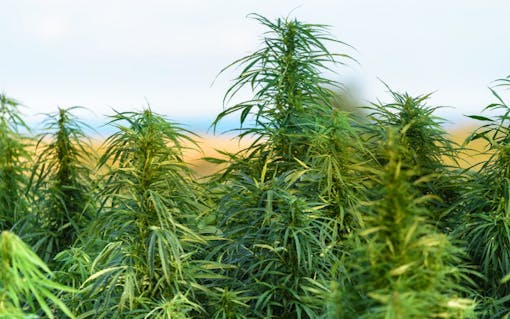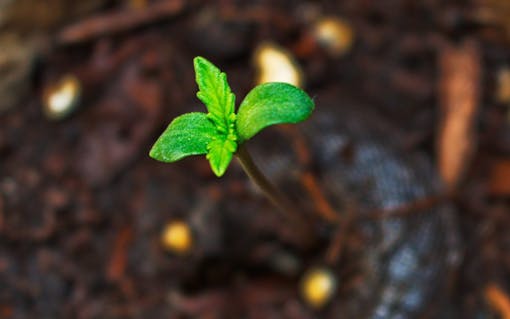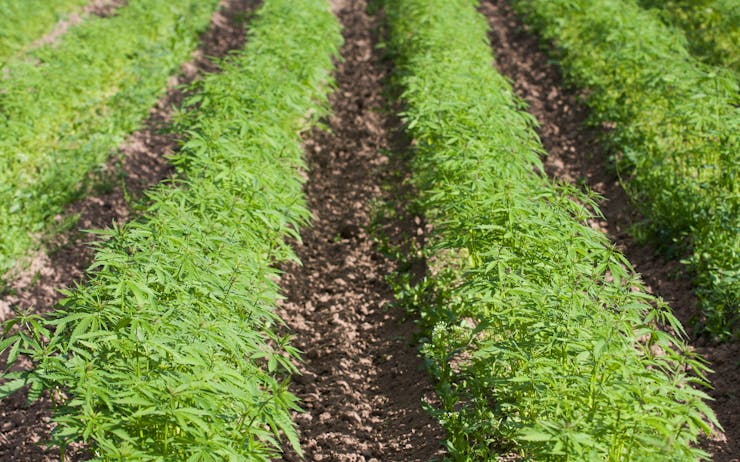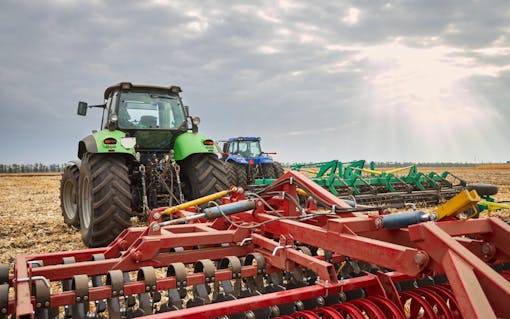There are two major problems casting a shadow over cannabis cultivation as a whole: chemical safety and sustainability. Although these problems are not exclusive to the cannabis industry, their unique impact on both the industrial and cottage markets as well as with home growers alike is noticeable.
A potential solution to both of these problems lies in a farming practice known as “no-till gardening.” This technique incorporates organic practices and natural systems to create a thriving environment conducive to growing healthy plants with less input. No-till gardening is both organic and sustainable, offering a safe and efficient way of cultivating cannabis without the need for chemicals and wasted energy.
What Is ‘No-Till’ Farming?
Contrary to conventional agricultural practices which involve mechanically disturbing the soil, no-till farming incorporates natural mechanisms that leave soils undisturbed. This principle is based on the foundation building a thriving biology within the soil, a process which is severely compromised when a soil is tilled.
No-till farming and organics go hand in hand, building upon the philosophy that natural systems within the soil will provide the plants with fully bioavailable nutrients with very little need for external input. These natural systems work together in symbiosis to support a flourishing biological community ripe with fungi, bacteria, and more.
What Are the Benefits of No-Till Methods for Growing Cannabis?

With traditional cannabis farming techniques, soils are either tilled and amended with nutrients between plant cycles or tossed out altogether. While these practices can be highly effective for growing cannabis, they aren’t very efficient as the never-ending need for chemical inputs and the consistent tilling or tossing of soils is anything but promotional to building a soil biology.
No-till cannabis farming, on the other hand, eliminates the need for input altogether by letting nature do all of the work. This saves not only time and money, but the hassle of having to worry about using potentially harmful chemical inputs such as pesticides or plant growth regulators. Furthermore, untilled soils can be reused for years on end with almost zero input whatsoever, making this the most sustainable way to cultivate cannabis.
Common Misconceptions About No-Till Farming
One misconception about no-till cannabis farming is that this practice is difficult to scale in either direction. This couldn’t be further from the truth. No-till farming is just as accessible to the home grower using 3-gallon pots as it is to the top tier farmer cultivating on a massive scale. The power of no-till lies within building a thriving soil food web. This concept can be successfully achieved in any spacial capacity, offering the same security and sustainability.
Shop highly rated dispensaries near you
Showing you dispensaries nearAnother common misconception with no-till farming is that it promotes pest populations. This is only partially true. A thriving soil microbiology is teeming with all sorts of life. Fungi, bacteria, nematodes, mites, worms, protozoa, and even larger insects and animals all encompass the web of life that can exist in a fully charged, untilled organic soil medium. These lifeforms are not only beneficial to the plants themselves by making nutrients in the soil more bioavailable, they actively control harmful pest populations such as spider mites and fungus gnats through naturally occurring systems.
One of the worst misconceptions about no-till cannabis farming is that the practice is incapable of producing the same quality and quantity that traditional agricultural methods can. Nature itself is a perfect example of why this isn’t the case. The richest ecological environments in the world are those least disturbed.
Take the old growth Redwood forests in the Pacific Northwest for example. The microbiological climate in this part of the country is staggering as a result of the undisturbed natural mechanisms that have been in place for thousands of years. In these same regions, cannabis farmers are utilizing similar techniques to produce some of the industry’s leading products in terms of flavor, yield, and safety standards.
Creating a No-Till Cannabis Garden at Home

If you want to incorporate no-till farming practices into your home cannabis garden, getting started is both simple and surprisingly inexpensive. Start by building yourself a super soil using a mix of organic ingredients such as composts, amendments, and a bit of aeration through the form of perlite or lava rock. Mix these ingredients together and use them as your grow medium.
Because your cannabis will need certain macronutrients at certain times, layering the topsoil with various cover crops will eliminate the need for consistent amendments to the soil. Nitrogen-fixing cover crops are a great way to get macronutrients back into your soil.
Amending your super soil with worms is a great way to promote the production of fresh compost, otherwise known as “vermiculture.” In this system, worms digest decomposing organic material and create castings that replenish the soil with valuable nutrients, eliminating the need for the external input of fertilizers. With worms, growers are encouraged to add organic matter to their topsoil, a healthy worm snack that promotes healthy decomposition while constantly adding life back into the soil.
Whether it be to eliminate the use of chemical pesticides, fertilizers, and other costly and potentially unsafe inputs, or to save money and time by reusing soils, no-till farming is continuing to rise as a viable alternative to traditional cannabis agricultural practices. Both top-tier cannabis farms and home growers alike can harness the powers of no-till farming for a safer and more sustainable crop that saves time and money. With little to no input overt time, no-till farming could very well be the safe, sustainable answer that the cannabis industry has been looking for.







